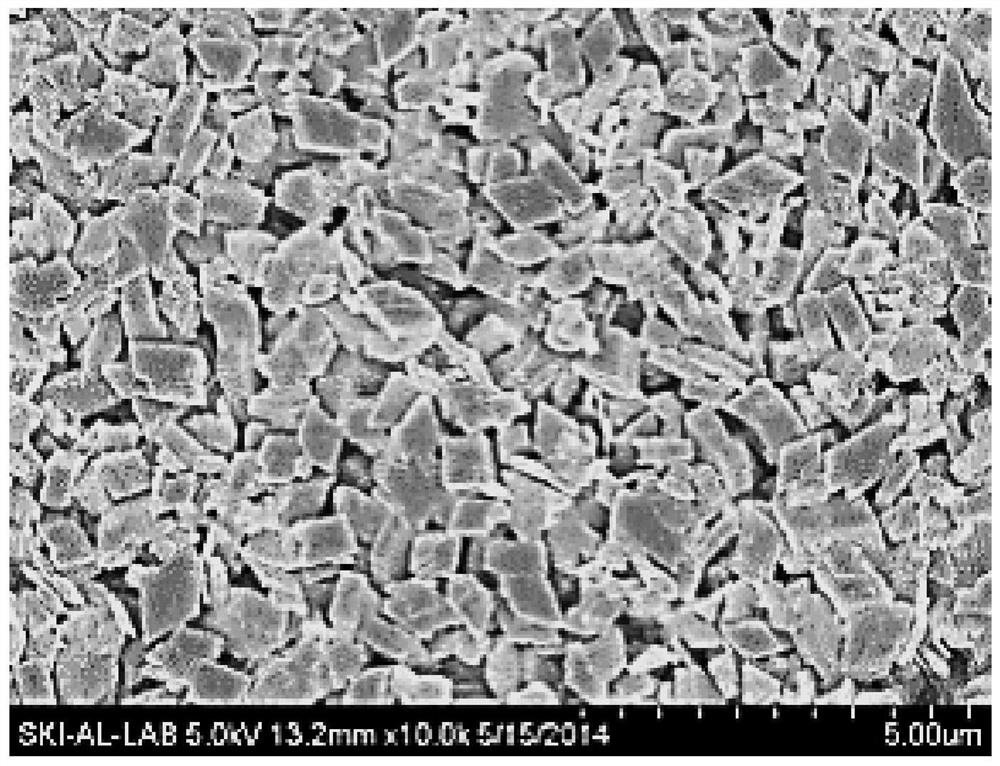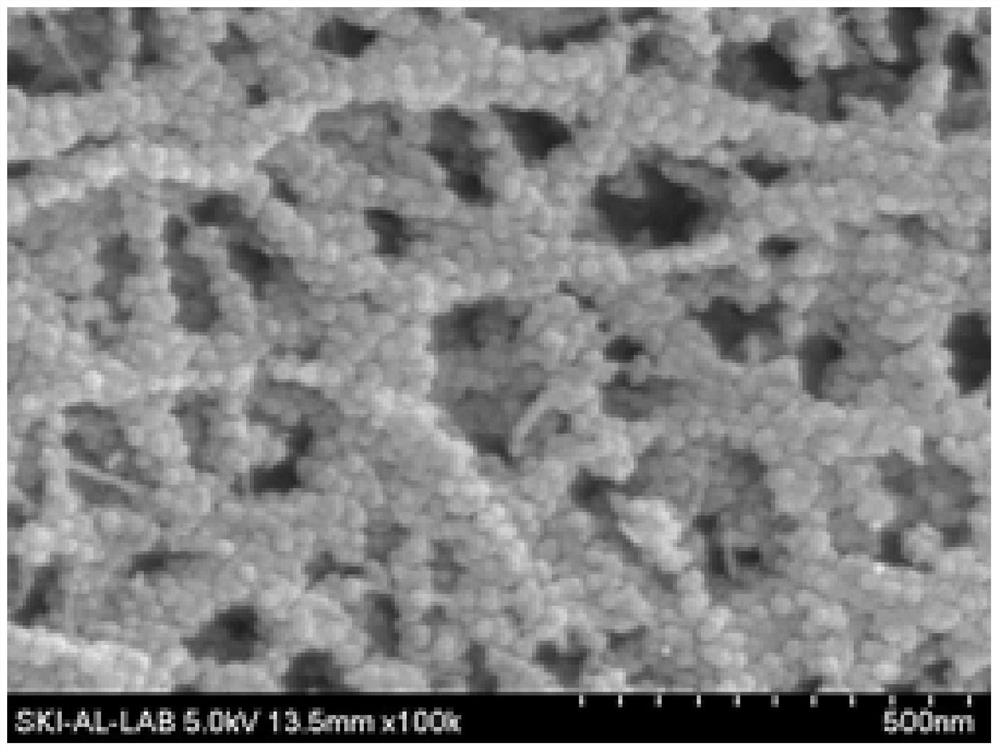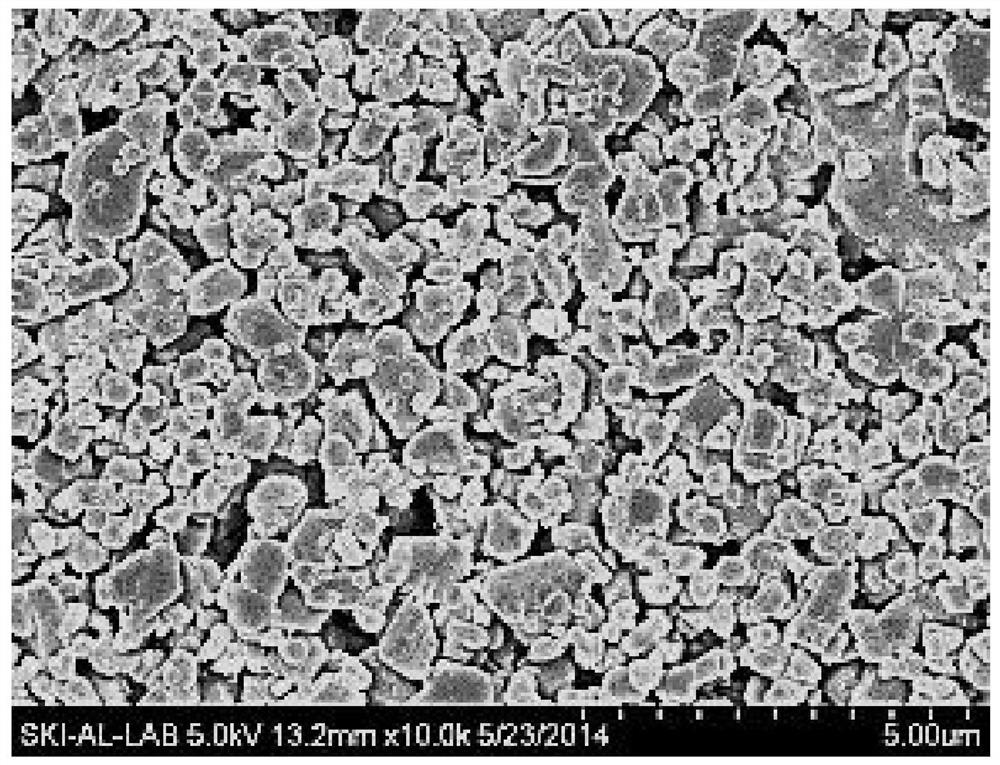Composite separation membrane for secondary battery and preparation method thereof
A separation membrane, polymer technology, applied in the direction of secondary batteries, battery pack parts, circuits, etc., can solve the problems of reduced wettability, reduced discharge capacity, increased battery size, etc., to achieve the effect of excellent adhesion
- Summary
- Abstract
- Description
- Claims
- Application Information
AI Technical Summary
Problems solved by technology
Method used
Image
Examples
preparation example Construction
[0071] The preparation method of the composite separation membrane of the present invention will be described in detail below.
[0072] The preparation method of the composite separation membrane of the present invention comprises the following steps: (a) coating a coating composition mixed with ceramic particles and a binder on one side or both sides of a porous polymer substrate and then drying, thereby forming a ceramic layer; (b) introducing and contacting a metal precursor on the surface of the porous polymer substrate and the surface of the ceramic layer; (c) purging with an inert gas; (d) introducing a gas containing an oxidizing agent A metal oxide layer is formed. The present invention may also include the step (e) of purging with an inert gas after the step (d).
[0073] The ceramic layer of the present invention can be formed in the following manner. Dissolve the adhesive in a solvent first, then add ceramic particles and stir to disperse, then coat on one or both...
Embodiment 1
[0111] In order to prepare polyolefin-based microporous membranes, a weight-average molecular weight of 3.8×10 5 High-density polyethylene, and dibutyl phthalate mixed in a ratio of 1:2 and paraffin wax with a kinematic viscosity of 160cSt at 40°C are used as a diluent, and the high-density polyethylene and the diluent are prepared with 30 wt. % and 70% by weight of the content of the mixed composition. Extrude the composition at a temperature of 240° C. using a twin-screw laminating machine equipped with a T-die, and induce phase separation by passing the extruded composition through a zone set at 180° C., and use casting rolls to produce Polyethylene porous substrate. Under the conditions of longitudinal (MD, Machine Direction) and transverse (TD, Transverse Direction) stretching ratios of 7.5 times and a stretching temperature of 131°C, it is obtained by successive biaxial stretching, and the heat setting temperature is 130 ℃, heat-fixed width of 1-1.3-1.1 to make. The f...
Embodiment 2
[0117] In the process of Example 1, in addition to introducing trimethylaluminum (Al(CH 3 ) 3 ) for 1 second and contact, after purging with argon (Ar) for 10 seconds, introduce water vapor (H 2 (0) for 1 second, and then again purged with argon (Ar) for 10 seconds, except that the number of repetitions was 60 times, and a composite separation membrane was prepared in the same way. At this time, the formed aluminum oxide (Al 2 o 3 ) layer is 10nm.
[0118] As a result of SEM-EDS measurement of the prepared composite separation membrane, the aluminum oxide layer was extended and formed on the surface of the polyethylene porous substrate and formed into the inside, and it was also confirmed in the ceramic layer by atomic layer deposition An aluminum oxide layer is formed.
[0119] The physical properties of the prepared composite separation membrane were measured, and the results are shown in Table 1.
PUM
| Property | Measurement | Unit |
|---|---|---|
| thickness | aaaaa | aaaaa |
| thickness | aaaaa | aaaaa |
| thickness | aaaaa | aaaaa |
Abstract
Description
Claims
Application Information
 Login to View More
Login to View More - R&D
- Intellectual Property
- Life Sciences
- Materials
- Tech Scout
- Unparalleled Data Quality
- Higher Quality Content
- 60% Fewer Hallucinations
Browse by: Latest US Patents, China's latest patents, Technical Efficacy Thesaurus, Application Domain, Technology Topic, Popular Technical Reports.
© 2025 PatSnap. All rights reserved.Legal|Privacy policy|Modern Slavery Act Transparency Statement|Sitemap|About US| Contact US: help@patsnap.com



